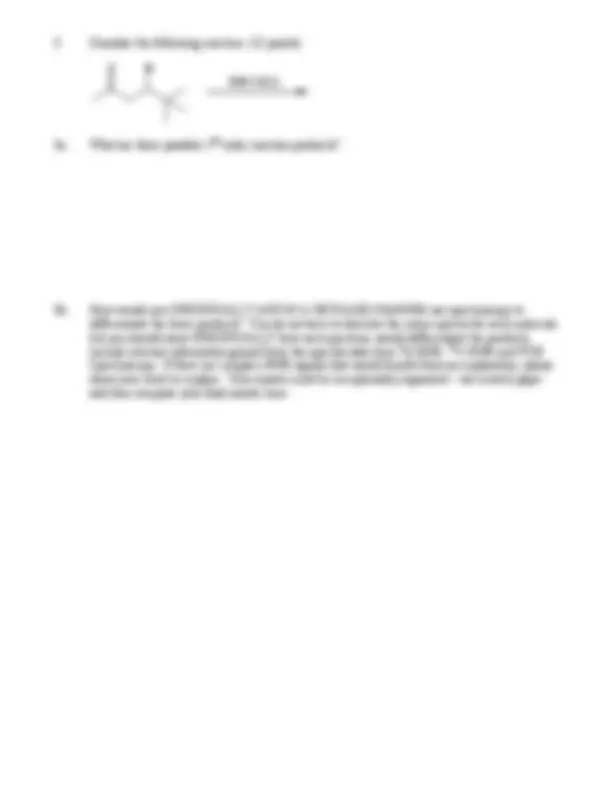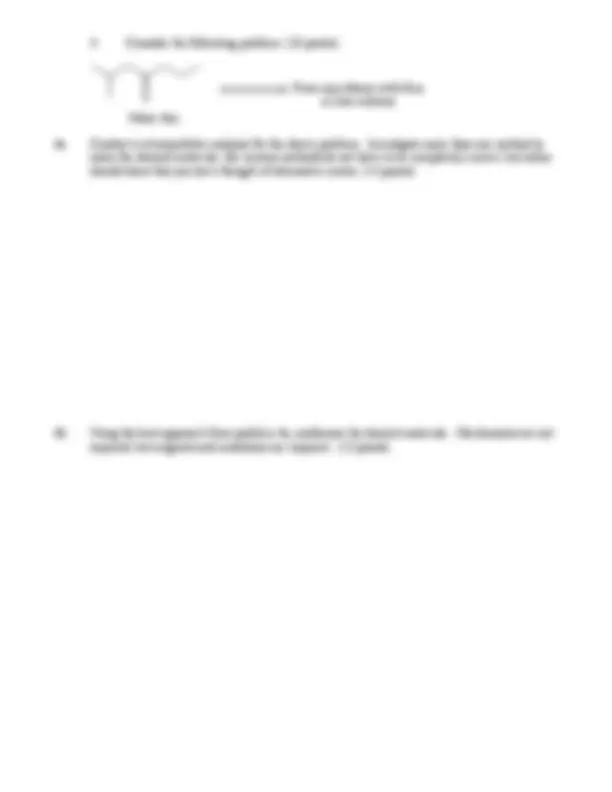




Study with the several resources on Docsity

Earn points by helping other students or get them with a premium plan


Prepare for your exams
Study with the several resources on Docsity

Earn points to download
Earn points by helping other students or get them with a premium plan
Community
Ask the community for help and clear up your study doubts
Discover the best universities in your country according to Docsity users
Free resources
Download our free guides on studying techniques, anxiety management strategies, and thesis advice from Docsity tutors
Material Type: Exam; Class: Organic Chemistry II; Subject: Chemistry; University: Whittier College; Term: Spring 2002;
Typology: Exams
1 / 4

This page cannot be seen from the preview
Don't miss anything!



Name:
Test # February 27, 2002
1a. Briefly explain the fundamental principles of IR spectroscopy. (8 points)
1b. What are organometallic reagents? Provide two examples and explain their reactivity.(8 points)
1c. What information can we get from 13 C NMR spectrometry? (8 points)
1d. In organic chemistry, when we talk about oxidation and/or reduction, what are we talking about? Provide examples as needed. (8 points)
2a.
2b.
2c.
2d.
2e.
H
O
Br
Product 2b and Product 2c
HO
H
O
Br
Product 2b Product 2d
Product 2c Product 2e
Product 2d and 2e
O Make this
From any alkane with four or less carbons
4a. Conduct a retrosynthetic analysis for the above problem. Investigate more than one method to make the desired molecule; the various methods do not have to be completely correct, but rather should show that you have thought of alternative routes. (13 points)
4b. Using the best approach from problem 4a, synthesize the desired molecule. Mechanisms are not required, but reagents and conditions are required. (13 points)